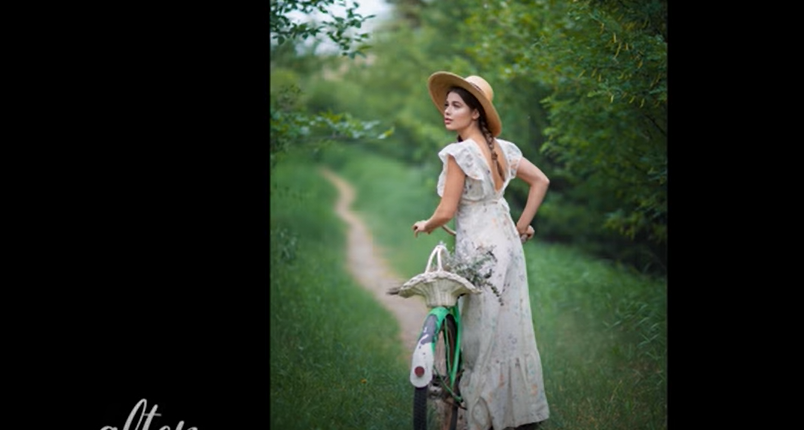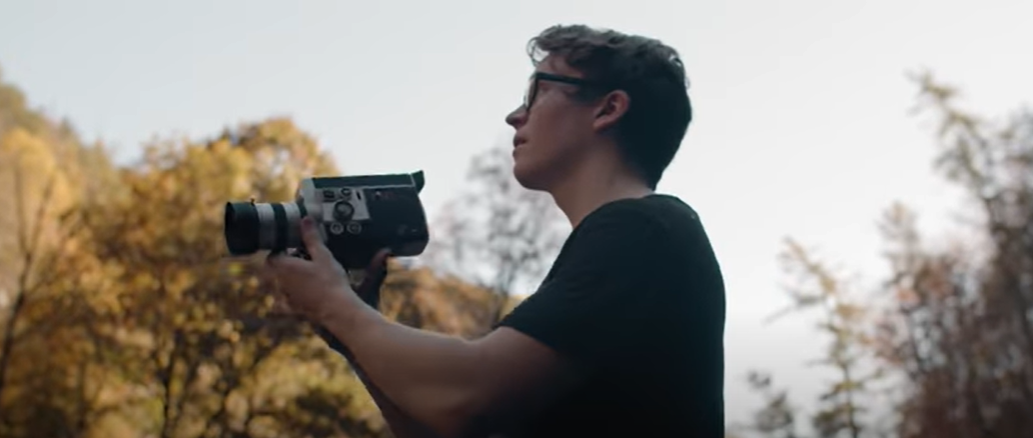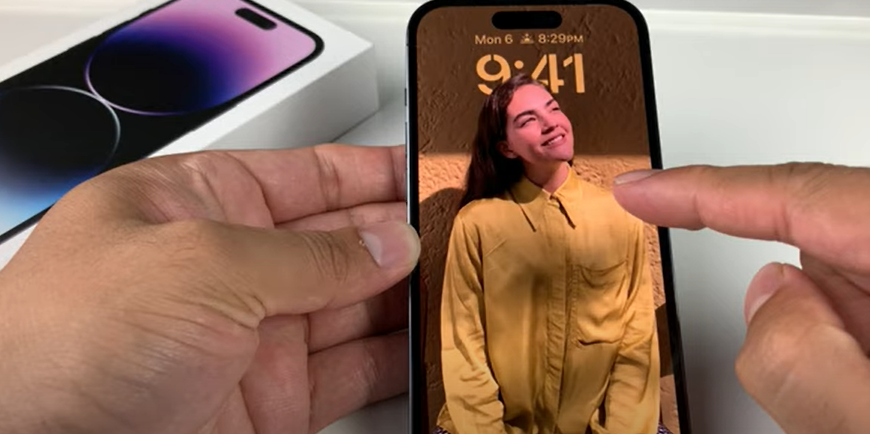How To Add A Depth Effect To Photos?
One of the easiest methods to add depth to your photos is to use a wide-aperture camera. A wide aperture (low number of f) lets more light being captured by the camera, resulting in a smaller field depth. The result is that the objects in front of you will be sharp and the background will blur. You can also create this effect manually by changing the aperture settings of your camera.
If you don’t own cameras with a wide aperture, you may create a depth effect with software for editing photos. Many photo editing applications as well as software applications, like Adobe Photoshop and Lightroom, come with built-in techniques to achieve this effect.
One of the best-known tools is the “Lens Blur” filter, which lets you alter the blur radius and shape in order to achieve realistic depth effects. You can also manually select the areas of the image you wish to blur using the selection tool and then apply the blur effect.
To enhance the depth of photographs, try these techniques:
- Make adjustments to the aperture: Choose an aperture of wide (small number of f) to create an extremely small depth of focus. This blurs the background, making your subject’s image stand out.
- Make use of a larger lens: A longer lens can help compress the background and make your subject appear further away from the front.
- Shoot from a low angle: shooting from a low angle can give your subject a more expansive appearance and a feeling of depth.
- Utilize the leading lines: Leading lines can draw the eye of the viewer into the image and give it an illusion of depth.
- Include elements of the foreground: Foreground elements add depth to your photos and add interest to your photo.
- Utilize post-processing software: You can also create a depth effect using Adobe Photoshop or Lightroom. It is possible to use tools such as gradient and blur filters to produce a depth of field or alter the brightness and contrast to give a feeling of depth.
The key to creating a pleasing impact on depth is to experiment with different techniques to discover the best approach for your particular subject and composition.
Basics Of Depth In Photography
Depth is an essential aspect of photography that adds dimension and appeal to your photos. The perception of space and distance is present in the photo. It can create a visually engaging and immersive experience for viewers. We’ll go over the fundamentals of depth photography and how you can use it to improve your photography.
What Is Depth In Photography?
In photography, the term “depth” refers to the perception of separation between a picture’s middle ground, foreground, and background. It gives a sense of dimension and space in the photo, making it more interesting and engaging. Various methods, such as perspective, selective focus, and composition, can accomplish the ability to create depth.
Perspective And Selective Focus
One way to add depth to your photographs is by using perspective. This creates the illusion of distance by placing objects at various distances from the camera. As a result, the objects closer to the camera appear larger, and those further away appear smaller.
It can also give you a sense of Fieldwork is another important factor in the field of photography. It refers to the amount of distance that is visible. An extremely shallow depth field in which only a small part of the picture is focused is a way to create a sense of the depth and distance of the picture.
Adding Depth Effect To Photos For Beginners

Leading lines are a great way to give depth to your photographs. They are a great way to draw the eye of the viewer into the photograph, creating the illusion of depth. Leading lines can range from winding road rivers to fence posts or tree trunks. When you compose your photo, position your subject so that your leading lines direct viewers’ eyes toward the subject.
Another method of adding depth to your photos is to make layers. It is possible to do this by incorporating elements from your photo’s middle ground, foreground, and background; by adding layers to your photo, you create an illusion of depth and depth in the image. This is particularly useful when you shoot cityscapes or landscapes.
Use Depth Of Field And Explore Perspective
Depth of field is another effective method of adding depth to your photographs. When you use a low depth of field, you can blur out the background and foreground to create an illusion of depth and a sense of isolation surrounding your subject. This method is great for shooting portraits because it will help highlight your subject in contrast to the background.
Perspective also plays an important role in adding depth to your photographs. By altering the perspective or shooting from a different angle, you can create the illusion of depth. For instance, shooting from a low angle will make your subject appear more prominent. Shooting from a higher angle will give the viewer a better understanding of the surroundings around your subject.
Highlights and shadows could be used to give your photos depth and create contrast between dark and light areas. This method is particularly efficient when photographing buildings or other structures humans make. Capturing the movement of shadows and light creates a sense of depth and scale in your photograph.
Enhancing Depth Effect in Post-Processing
Lens The blur filter is a powerful tool that will improve the depth effect in your photos. The filter produces a realistic blur effect that mimics the depth-of-field effect produced by the real camera. To use this filter, first, you must select the photo region you would like to use for the blur effect. Then you can alter the blur radius, threshold, and highlights to refine the effect and give the illusion of depth.
Modifying the brightness of an image could aid in enhancing the effect of depth. By enhancing the contrast between the background and foreground in an image, it will appear more depth. This is because the human eye naturally concentrates on areas with high contrast. Creating a distinct, stark contrast in the foreground and background can help the subject appear more prominent in 3D.
Using The Dodge And Burn Tools And Adding Shadows And Highlights
It is important to know that the Dodge and Burn tools are powerful tools that aid in creating depth in an image. For example, the Dodge tool can make areas lighter in an image, and the Burn tool can be used to darken the areas. You can selectively utilize these tools to create the burn illusion of depth within the image. For instance, you could utilize Burn to create the illusion of depth. use the Burn tool to make the image’s background. This makes the subject appear to be more 3D.
Adding highlights and shadows to your image is an efficient method to increase the effect of depth. By applying shadows to the image’s background, you can create the illusion of depth, making it appear three-dimensional. Likewise, by using highlights in the background of an image, you can give the illusion of the object being closer to the viewers.
Tips For Adding Depth Effect To Specific Types Of Photos
Portrait photographs are an ideal choice to apply the depth effect. The trick to achieving this is blurring the background while clarifying the subject. This is accomplished with an aperture that is wide, creating an extremely shallow field depth. You can also use image editing software to enhance the look. Finally, apply a soft brush that blends the lines of your background and the subject for an organic appearance.
Adding depth to landscape photographs will give a sense of space and distance. To create this effect, employ a wide-angle lens to capture a wider scene. Utilizing the three-point rule to put subjects in the foreground as the background disappears It is also possible to use leading lines, like winding roads or rivers, to draw the viewer’s attention to the image.
Photos Of Product And Macro Photos
Products are commonly used for marketing and e-commerce. Adding a depth effect to images of products will make them more appealing and help increase sales. To do this, use a lightbox to create a dark-free space, and then use a small aperture for a wide focus line. This will keep the whole object in focus while blurring the background.
Macro photographs are extremely close-ups that reveal the complex aspects of the subjects. Adding a depth effect to macro images will increase their appeal and enhance the detail. For this, use an aperture of a small size to create the illusion of depth. You can also use an editing program to create the effect. Be sure to choose the subject carefully and use the effect only sparingly to avoid creating a messy look.
Tools And Software For Adding Depth Effect To Photos

Adobe Photoshop And Adobe Lightroom
Adobe Photoshop Adobe Photoshop is an extremely popular software for editing photos with various tools and features to add depth to images. The most widely employed option is Lens Blur,” which can be described as a “Lens Blur” filter that lets users blur background images while keeping the subject in the center. The users can also use the “Depth Map” feature to create a depth effect by selecting the regions they want to focus on.
Adobe Lightroom is another program for editing photos that provides various tools for adding depth to photographs. It also comes with the “Radial Filter” tool, which allows users to choose and apply various adjustments to specific parts of the image. This is a great way to create a depth effect by altering the focus or blurring the background.
Fotor And Canva
Fotor can be described as a completely free online photo editing program that provides various tools to add depth effects to photographs. For example, the program comes with the “Tilt-Shift” tool that allows users to create a shallow focus by blurring both the bottom and top parts of the image. The user can also change the blur’s intensity and the focal point’s location.
Canva is a popular graphic design software with numerous tools to create designs and edit images. It also comes with a “Blur” tool that allows users to blur the background while making the subject visible. Users can also alter the amount of blur and place it in specific parts of the image.
Common Mistakes To Avoid When Adding Depth To Photos
Some of the most frequent mistakes to avoid are adding the effect of depth to an image.
Inappropriately using the blur effect.
One of the biggest mistakes people make when adding a depth effect to their images is using too much blur. While the blur effect is a great tool to create depth, it can be overdone, resulting in an image that appears fake and unreal.
When you use blur effects, it is essential to apply the blur effect sparingly and deliberately. It is best to only blur areas of the image that are intended to be blurred, for example, the background or the foreground. The subject must remain clear and sharp; otherwise, the image appears blurry and unappealing.
Applying Too Many Contrasts
Another mistake that is often made when creating depth effects is using excessive contrast. Although contrast can help create depth by segregating background and foreground elements, too much contrast could cause the image to appear harsh and overprocessed.
When you are adding contrast, you must use it in moderation. For example, try to create an even tone between the background and foreground and not create a stark contrast. This gives her a more realistic and natural appearance.
Inattention To The Source Of Light
When adding depth effects to an image, knowing the light source is crucial. The light source produces highlights and shadows, which create dimensions and depth. The image will appear unreal and flat if the light source is not considered.
When adding depth effects, it is important to consider how the light source is directed and the shadows it produces. This will allow you to create an authentic look by adding depth to your image.
Inappropriately Using The Saturation Effect
The saturation effect is an excellent tool to create depth by giving color to the foreground while de-saturating the background. But using too much saturation could make the appearance unnatural and excessively processed.
If you’re using this saturation effect, you need to apply it with care. Try to create an ethereal contrast between the background and foreground shades, not a stark contrast. This creates a more realistic and natural style.
When you take a photograph that you’re planning to add the effect of depth to, it is important to choose an aperture that is larger to create an elongated blur. This creates natural blur effects that separate the foreground from the background.
If you opt for a smaller aperture, the entire photo will be sharp, and applying depth effects during post-processing will be difficult. Therefore, when you take photos, choose a larger aperture to achieve an authentic and natural depth effect.
Depth Effect Photos

The effect of depth in photographs, also known as the “bokeh effect,” is the aesthetic effect of areas that aren’t in focus in a photograph. It gives a feeling of depth and dimension and draws the eye toward the subject.
To create the illusion of depth in your photographs using various techniques:
- Wide aperture: A large aperture (such as f/2.8 or greater) will result in an extremely small depth of field, blurring the background and foreground and isolating the subject.
- Telephoto lens: A telephoto lens will reduce the scene’s size while blurring the background helping the object stand out.
- Distance: The subject’s position from the background will aid in creating a feeling of depth and distinction between the two.
- Post-processing: It is also possible to add an effect of blur when you post-process using tools such as Adobe Photoshop or Lightroom to create an effect called bokeh.
Exploring these techniques can result in stunning photographs with a stunning depth effect.
Add Depth Effect To Photo Online | Using Online Apps To Create Depth Effect In Your Photos
Numerous online tools and applications enhance the depth of your photographs. Here are a few of the most popular tools:
- Fotor: Fotor is a no-cost online photo editor offering various effects and tools, such as a “Depth of Field” effect, that adds a blurred background to your photos.
- Be Funky: Be Funky can be a second Free online photo editor with the “Depth of Field” effect. There is also a range of filters and effects that you can apply to improve your photos.
- Pic Monkey: Pic Monkey offers an extremely powerful online photo editor that provides the “Depth of Field” effect along with several other features that are more advanced. But it’s not completely free and requires a paid subscription.
- Canva: Canva can be a well-known online tool for designing graphics, including the “Depth of Field” effect that you could apply to your images. Additionally, it offers a variety of design tools that will assist you in creating stunning images.
- Portrait AI: Portrait AI can be described as an online tool powered by AI that automatically adds a depth effect to photos of portraits. It employs sophisticated algorithms to produce an authentic depth-of-field effect to help your photos appear professional and polished.
FAQ’s
What is the depth effect in photography?
The depth effect in photography refers to creating a sense of depth in a two-dimensional image, making it look more like a three-dimensional scene. It is usually achieved by blurring the background while keeping the subject in sharp focus, creating a shallow depth of field.
What camera settings can be used to create a depth effect?
To create a depth effect, you can use a wide aperture (low f-number) to decrease the depth of field. The wider the aperture, the shallower the depth of field will be. Additionally, increasing the distance between the subject and the background can also help to create a more noticeable depth effect.
Can I create a depth effect using a smartphone camera?
Yes, you can create a depth effect using a smartphone camera, as many modern smartphones come with a portrait mode that creates a similar effect by using dual-lens cameras or software algorithms. You can also use third-party apps such as Snapseed, which has a selective focus tool that allows you to blur the background and create a depth effect.
Can I add a depth effect to photos using editing software?
Yes, you can add a depth effect to photos using editing software such as Adobe Photoshop or Lightroom. You can use the selective blur tool or create a mask to separate the subject from the background and then apply a blur effect to the background.
What are some tips for creating a more realistic depth effect?
To create a more realistic depth effect, try to choose a subject that stands out from the background, such as a person or a flower. Also, make sure to keep the subject in sharp focus while blurring the background, and try to avoid over blurring the background, as this can make the effect look artificial.
What are some other ways to add depth to photos?
Other ways to add depth to photos include using leading lines or framing techniques to draw the viewer’s eye into the image, adjusting the contrast and brightness to create a sense of depth, and using foreground elements to create a sense of distance between the subject and the viewer.

















